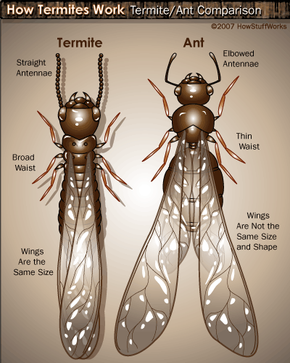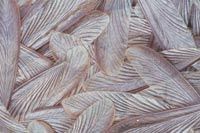Quck answer
Termites are social insects that live in colonies and feed on wood and other plant materials. They have a highly organized social structure with different castes, including workers, soldiers, and reproductive individuals. Termites have a unique digestive system that allows them to break down and extract nutrients from cellulose, the main component of wood. They also have a symbiotic relationship with microorganisms in their gut that aid in digestion. Termites can cause significant damage to buildings and other wooden structures, and control measures may include chemical treatments or physical barriers. Understanding how termites work is important for effective pest management and conservation efforts.
Wildlife
Identifying Termite Infestations

Although termite treatments and proper construction techniques can help prevent infestations, they are not foolproof. Homeowners living in areas prone to termites should remain vigilant for signs of these wood-eating insects. A swarm is often the first sign of an infestation. If you find alates inside your home, they likely entered through your walls, indicating the presence of termites. However, if you spot a swarm outside, particularly near a stump or tree, it may not have reached your building yet. To differentiate between ants and termites:
- Ants have a narrow waist, while termites do not.
- Ants have significantly longer front wings than back wings, while termites’ wings are the same length and can fold straight back down their bodies.
- Ants have bent antennae, while termites’ antennae are straight and resemble a fine string of pearls.
Other common signs of termite infestation in homes include:
- Discarded wings: After swarming, alates shed their wings. When they are inside a building, they often leave their wings on windowsills or near lights.
- Decayed wood: Termites typically damage wood along the grain and line it with soil. Damage from other sources, like water or fungus, does not follow this pattern.
- Shelter tubes: Termites build tubes along surfaces like cinder blocks, concrete, and brick to reach wood. Sometimes, breaking open the tubes reveals live termite workers inside.

Since termite damage occurs from the inside out, detecting an infestation can be challenging. If wood in your home sounds dull when struck with a hammer, it may have termite activity inside. You can also use a screwdriver or ice pick to probe areas where termites may be hiding, which may reveal damaged wood and the insects themselves. A professional exterminator is required to treat a termite infestation. Next, we’ll explore the most common methods for eliminating termites.
FAQ
1. What are termites?
Termites are small insects that feed on wood and other plant materials. They live in colonies and can cause significant damage to wooden structures if left unchecked.
2. How do termites communicate?
Termites communicate through a series of pheromones and vibrations. They use their antennae to detect these signals and respond accordingly.
3. What is the role of a termite queen?
The termite queen is responsible for laying eggs and maintaining the colony. She can lay up to 30,000 eggs per day and can live for up to 25 years.
4. How do termites eat wood?
Termites have special enzymes in their stomachs that allow them to break down the cellulose in wood. They also have special bacteria in their guts that help them digest the wood.
5. How do termites build their nests?
Termites build their nests using a combination of saliva, soil, and feces. They create elaborate tunnel systems within the nest to allow for easy movement and ventilation.
6. How do termites defend themselves?
Termites have several defense mechanisms, including producing toxic chemicals and using their strong jaws to attack intruders. They also have soldier termites that protect the colony from predators.
7. How can I prevent termite infestations?
To prevent termite infestations, it is important to remove any sources of moisture near the foundation of your home, such as leaky pipes or clogged gutters. You should also store firewood away from the house and inspect any wooden structures for signs of damage on a regular basis.





Leave a Reply